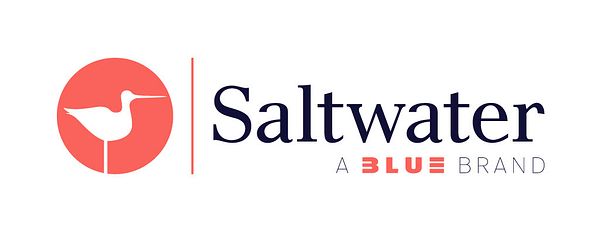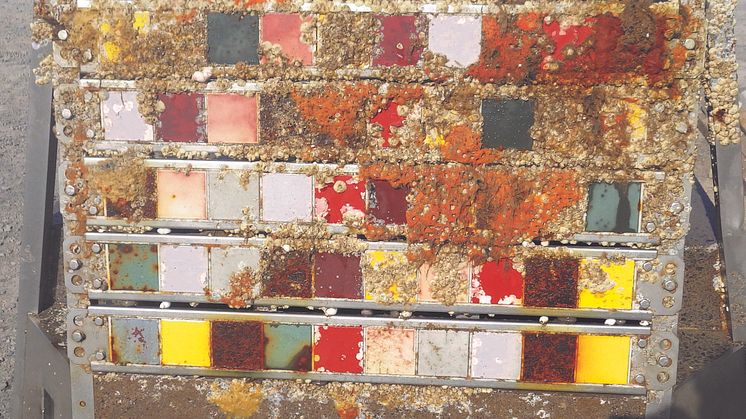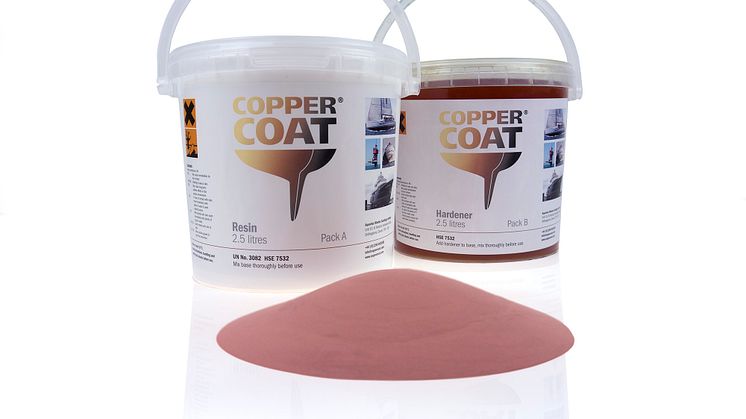
Press release -
Good news for environment as test data shows Coppercoat erosion is only 7% of rival products’ rate
Coppercoat has outperformed its rivals in a re-examination of antifouling test panels to determine the quantity of copper loss from different antifouling products to the environment. The assessment, which was carried out by Plymouth Marine Laboratory (PML), found that Coppercoat leached significantly less copper over five years than the other coatings on test. The panels are the basis of a previous PML report in which Coppercoat emerged as the best-performing antifouling.
In the in situ trial of protective coatings – conducted by the Energy Technologies Institute – two 3.5-tonne test pods covered in panels coated with a wide variety of antifouling systems were submerged in a tidal stream in the Fall of Warness, Orkney, Scotland. A meticulous recent re-examination of the test panels has revealed that while conventional (self-polishing) antifouling paints typically exhibited a mean product loss rate of 0.099µm/day, the Coppercoat showed a mean product loss rate of just 0.0071µm/day. And when the PML team examined the copper content alone – the active biocide – the loss from the Coppercoat was found to be a mere 1.42µg/cm2/day.
What this means, in more basic terms, is that the Coppercoat’s total product loss – over a five-year period of constant immersion in an area of strong tidal flow with mineral scour – was just 1/14th of that shown by traditional antifouling paint. Expressed as a percentage, the Coppercoat demonstrated a coating loss of approximately 4.3% over the five years: in comparison, the conventional antifouling paints on test lost 90-100% of their copper-containing topcoat.
From the tidal flow rate measurements taken at the test site, PML Project Coordinator Dr Tom Vance and his team calculated that the test equated to subjecting the coatings to a voyage of more than 283,000km at a speed of 3.5 knots over the five-year period. This statistic helps to illustrate why the Coppercoat officially supplied for the race boats on the 2017/18 Clipper Round the World Race yachts looked as good as new when the boats were lifted out following their 40,000NM circumnavigation.
The results of the re-examination speak volumes about Coppercoat’s inarguable benefits for the environment and clients alike, in a milieu where regulations concerning biocide leach rates from antifouling systems are set to become ever more stringent. The fact that Coppercoat leaches far less biocide into the sea than its competitors – and therefore protects for longer the boat hulls, diffusers, subsea coolers and wind turbine transition pieces to which it is applied – is of immense significance.
“It may even be possible, in some markets, to have Coppercoat exempted from laws pertaining to ‘antifouls’ as these results show that Coppercoat may not even be classifiable by the authorities as an ‘antifoul’ in the conventional sense,” reflects Ewan Clark, Coppercoat Director. “If Coppercoat could perhaps be classified as a ‘semi-permanent physical barrier to fouling’, as opposed to an ‘antifoul’ – in the conventional sense of antifouls being a biocide leaching coatings – then this could open many doors and save large sums in compliance works, tests, biocide levies and so on.”
The report is available at coppercoat.com.
Ends / Date: November 2019
For further information and images please contact:
Saltwater Stone
David Pugh
Tel: 01202 669244
Email: d.pugh@saltwater-stone.com
Aquarius Marine Coatings Ltd
Ewan Clark
Tel: 01258 861059
Email: info@coppercoat.com
Related links
Topics
About Aquarius Marine Coatings Ltd.
Aquarius Marine Coatings Ltd. manufactures the high-performance multi-season antifouls Coppercoat, Coppercoat-Superyacht and Coppercoat Commercial. Since launching in 1991, Coppercoat has proven to be the most durable and long-lasting antifouling coating available. These hard-wearing and densely copper-filled epoxy resins provide protection against unwanted marine growth for many years (commonly over a decade). To date, more than 75,000 sail and power vessels have been treated with Coppercoat in the leisure, commercial and superyacht sectors.


